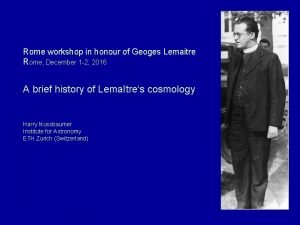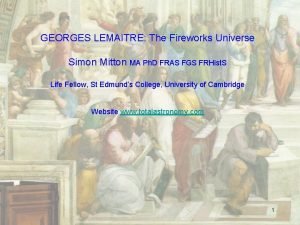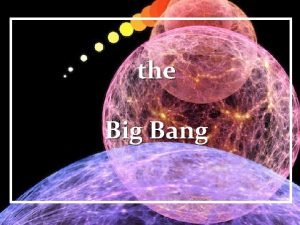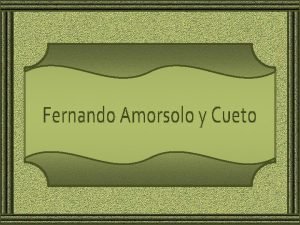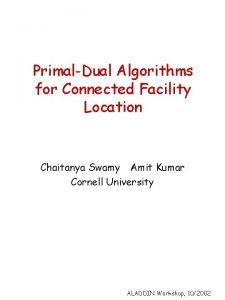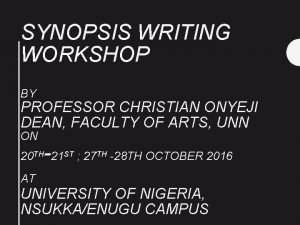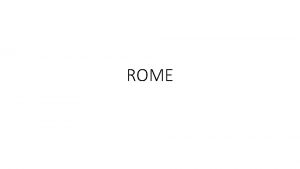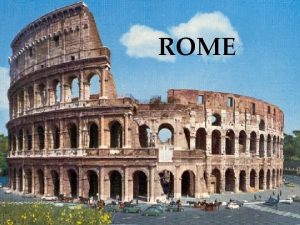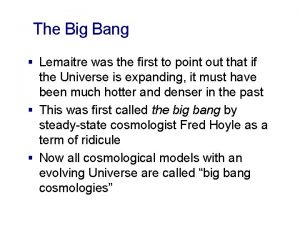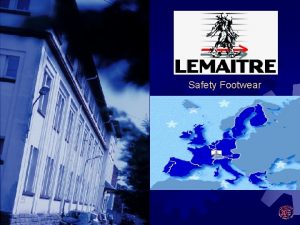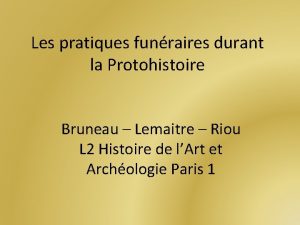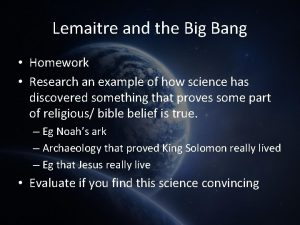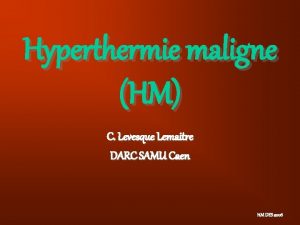Rome workshop in honour of Geoges Lemaitre Rome

























- Slides: 25

Rome workshop in honour of Geoges Lemaitre Rome, December 1 -2, 2016 A brief history of Lemaître‘s cosmology Harry Nussbaumer Institute for Astronomy ETH Zurich (Switzerland)

Cosmology around 1917 What is the Milky Way? Spectroscopy proves the unity of the universe. Nebulae: are they island universes? (Kant 1755, Laplace 1796) 1900: Karl Schwarzschild dreams of a non-Euclidean closed universe. ≥ 1912: Vesto Slipher finds strongly redshifted spectra in spiral nebulae.

1917: The first cosmological models based on general relativity A Albert Einstein (1879 -1955) B C

1917: The first cosmological models based on general relativity A B C Willem de Sitter (1872 -1934) Albert Einstein (1879 -1955)

1923/24: Lemaître studies with Eddington Arthur Stanley Eddington (1882 -1944), an acknowleged authority in astrophysics and general relativity. In 1923/24 Lemaître studies with Eddington in Cambridge.

1924/25: Lemaître does practical astronomy Arthur Stanley Eddington (1882 -1944), an acknowleged authority in astrophysics and general relativity. In 1923/24 Lemaître studies with Eddington in Cambridge. 1918: Harlow Shapley (1885 -1972) finds our place in the Milky Way. He places the spiral nebulae at the outer end of the Milky Way. In 1924/25 Lemaître works in Shapley’s group in Harvard.

1925: A universe of galaxies Arthur Stanley Eddington (1882 -1944), an acknowleged authority in astrophysics and general relativity. In 1923/24 Lemaître studies with Eddington in Cambridge. 1918: Harlow Shapley (1885 -1972) finds our place in the Milky Way. He places the spiral nebulae at the outer end of the Milky Way. In 1924/25 Lemaître works in Shapley’s group in Harvard. Edwin Hubble (1889 -1953). 1925: Distances to 3 nebulae. Yes, island universes do exist !

1925: Lemaître uncovers de Sitter's problem De Sitter violates the principle of homogeneity. Lemaître separates space and time. He finds a homogenous, flat, euclidean, non-static universe. It might explain the receding spiral nebulae. Lemaître rejects this model. “We are led back to the Euclidean space and to the impossibility of filling up an infinite space with matter which cannot but be finite…. ”

1925: Lemaître uncovers de Sitter's problem De Sitter violates the principle of homogeneity. Lemaître separates space and time. He finds a homogenous, flat, euclidean, non-static universe. It might explain the receding spiral nebulae. Lemaître rejects this model. “We are led back to the Euclidean space and to the impossibility of filling up an infinite space with matter which cannot but be finite …”. Philosophy not physics ! Thomas Aquinas?

1927 Lemaitre‘s masterstroke (Un univers homogène de masse constante et de rayon croissant, rendant compte de la vitesse radiale des nébuleuses extra-galactiques. Annales de la Société scientifique de Bruxelles. ) Connection between theory and observation: In a dynamic universe there is a relation v= H·r. Lemaitre finds H = 575 (km/s)/Mpc. Redshifts are due to the expansion of space ! Einstein tells Lemaître about Friedman.

Hubble‘s contribution in 1929 Hubble offered no interpretation for the linear relation except that it may represent the de Sitter effect. Hubble 1929 finds from observations: v= H·r. Distances mainly from Hubble, velocities mainly from Slipher (+ unpublished from Humason). H= 500 (km/s)/Mpc, Lemaitre in 1927 found H = 575 (km/s)/Mpc. )

Lemaitre‘s letter to Eddington in the spring of 1930: The breakthrough for the expanding universe Spring 1930: Enthusiastic acceptance by Eddington and de Sitter Lemaitre made the scales fall from their eyes. In a unprecedented move Monthly Notices published in 1931 a translation of Lemaitre‘s 1927 publication, with, however, important omissions.

Universe without a beginning ? Lemaître’s suggestion of 1927: Einstein’s model might describe the initial state. Eddington, Mc. Crea, Mc Vittie, Lemaître 1930.

Universe without a beginning, or with a beginning ? Lemaître’s suggestion of 1927: Einstein’s model might describe the initial state. Eddington, Mc. Crea, Mc Vittie, Lemaître 1930. THE BIG BANG Expansion begins through the breaking up of the primeval atom, containing the matter of the whole universe. – Quantum theory to furnish the physics. Lemaitre 1931

The Einstein-de Sitter universe Einstein and de Sitter in 1932: They abolish the cosmological constant Λ, they obtain an infinite, spatially flat universe, agreeing with our ordinary conception of space. They do not comment on the beginning. Albert Einstein (1879 -1955) and Willem de Sitter (1872 -1934). The Einstein – de Sitter universe became the cosmological standard up to the end of the 20 th century. Lemaitre‘s model was discarded into near-oblivion. Picture: Pasadena 1932.

The formation of the elements Top-down: 1931 Lemaitre: decay of the primeval atom. "Où toute l'énergie de l'univers ne formait qu'un seul quantum. "

The formation of the elements Top-down: 1931 Lemaitre: decay of the primeval atom. "Où toute l'énergie de l'univers ne formait qu'un seul quantum. " Bottom-up: 1939 Hans Bethe: hydrogen is fused into helium (proper calculation), but no heavier elements. 1942 Gamow and Fleming: Heavier elements must have been formed under exceedingly high pressure and temperature “at the beginning of time”. 1946/1948 Gamow et al. : Elements must have formed during the initial very hot and dense stage of expansion. (Doesn’t work for very heavy elements. ) → Hot Big Bang 1957 Burbidge, Fowler, Hoyle: All the elements can be produced in stars. George Gamow 1904 -1968

The formation of structure in the expanding universe Inhomogeneity emerges within an initially homogenous expansion The 3 phases of Lemaitre’s expanding universe Phase 1: Initial expansion decelerated by dominating gravitation. Phase 2: Instable equilibrium. Formation of inhomiogeneity. Phase 3: Accelerated expansion due to cosmological constant.

How did galaxies form ? As seen by others. 1939 Gamow & Teller: Jeans instability might perhaps work in an early expanding universe. 1945 Lifshitz: No formation of large scale inhomogeneity. No reason for Λ≠ 0. 1948 Gamow et al. : Jeans instability does not work, would need high inhomogeneity. 1952/1960 Bondi: Among the relativistic models, Lemaitre’s is the most convincing. Silk 1967: One of the overwhelming difficulties of realistic cosmological models is the inadequacy of Einstein's gravitational theory to explain the process of galaxy formation. (He assumes Einstein-de Sitter, and thus Λ=0. )

Today's view of the universe Einstein-de Sitter 1932 Important astrophysical differences against 1966. 1965, 1990 ies: Discovery of the cosmological background radiation. ≥ 1980 ies: Acceptance of dark matter in the modern sense Lemaitre 1933

Why was Lemaitre nearly forgotten? 1. His modesty and self-effacement 2. His clinging to the cosmological constant made him appear old-fashioned 3. Laziness of those writing «history» Example: After Hubble announced his discovery of the expansion of space. . . 4. Efficient advertising of the «Hubble-myth» by interested institutions.

Constructing a myth Referring to Einstein’s visit to Caltech in January/February 1931 (at the invitation of Milikan): Hubble shows Einstein that the universe is expanding Two months with Hubble were enough to pry him loose from his attachment to the cosmological constant. (Topper 2013) Einstein exclaimed after his Mount Wilson visit: “If there is no quasi-static world, then away with the cosmological term!” (Amir Aczel 2014) What are the facts about Einstein’s conversion?

Eddington 1930: Einstein’s universe of 1917 is unstable May 1930 Eddington (Monthly Notices): a) He shows that Einstein’s model is unstable. b) He adopts Lemaitre’s model. June 1930: Einstein visits Eddington. It was most probably during this visit that Einstein was updated on: 1. Eddington's finding the instability in Einstein’s static model, June 1930: Einstein stays with Eddington. Photo taken in Cambridge by Eddington’s sister. 2. the switch of Eddington and de Sitter to Lemaître's expanding universe, 3. Hubble's publication, confirming Lemaitre.

How did Lemaître influence the history of cosmology? In a lasting way: 1927 Lemaitre discovers the expansion of the universe. 1931 Lemaitre proposes a sudden birth of the expanding univers (the Big Bang). Essential insights: 1925 He spots de Sitter’s ill-chosen coordinates. 1933 Starts investigation into the emergence of inhomogeneity. 1933 He suggests that the cosmological constant corresponds to vacuum energy, and he defends Λ as a basic force of nature.

De Sitter on Lemaître’s contribution to cosmology. Willem de Sitter, talking of the impasse reached in cosmology around 1930: The way out of this dilemma has been shown by the Abbé Lemaître, whose brilliant solution, the "expanding universe", was discovered by the scientific world about a year and a half ago, three years after it had been published. […] There can be not the slightest doubt that Lemaître's theory is essentially true, and must be accepted as a very real and important step towards a better understanding of Nature, October 24, 1931
 Geoges lemaitre
Geoges lemaitre Geoges lemaitre
Geoges lemaitre Georges lemaître biografia
Georges lemaître biografia Lemaitre
Lemaitre Honour in elizabethan times
Honour in elizabethan times Ancient of days blessing and honour
Ancient of days blessing and honour St john pledge
St john pledge We must always honour your words why
We must always honour your words why Tcs ion industry honour certification
Tcs ion industry honour certification Tcs internal certification
Tcs internal certification Chinabank online registration do not honour
Chinabank online registration do not honour Oh that old rugged cross my salvation
Oh that old rugged cross my salvation Fernando amorsolo spouse
Fernando amorsolo spouse Cat honour
Cat honour Isni's workshop
Isni's workshop Grove strategic visioning
Grove strategic visioning Workshop objectives examples
Workshop objectives examples Workshop security awareness
Workshop security awareness Plm lcw
Plm lcw Tcbc workshop
Tcbc workshop Joint injection crestview
Joint injection crestview Business strategy workshop presentation
Business strategy workshop presentation Vj workshop
Vj workshop Mentor texts for reading workshop
Mentor texts for reading workshop Antonym
Antonym Workshop synopsis examples
Workshop synopsis examples
